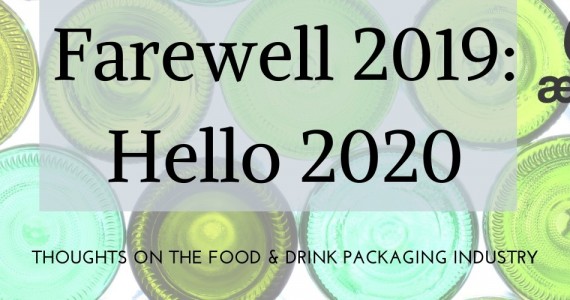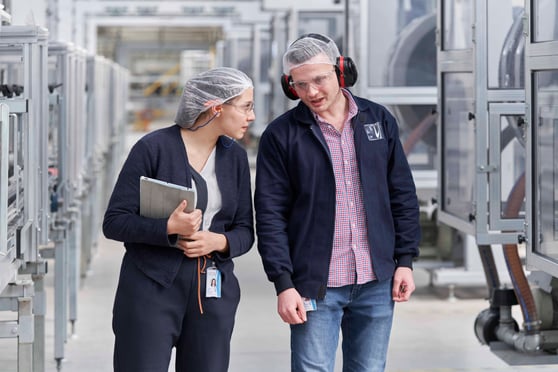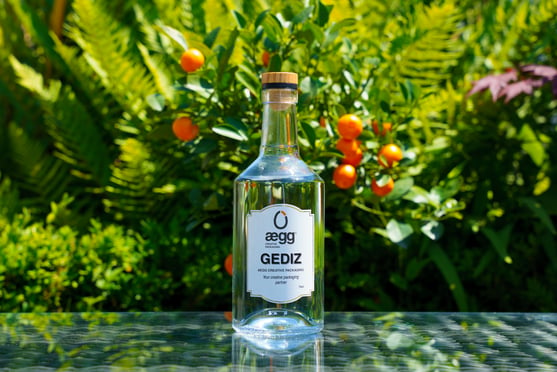Food & Drink Packaging Trends. Farewell 2019: Hello 2020

Welcome to 2020. 2019 was certainly fast paced with uncertainty and opportunities influencing the industry in equal measure.
2020’s packaging trends look set to be full of changes again, as the plastics/ glass debate unfolds further, set against a Brexit backdrop.A Quick Look Back at 2019...
Which packaging materials are best?
Consumer confusion again dominated the industry’s materials landscape, with sustainability, re-usability, recyclability and practicality all playing a part in the complicated decision-making journey. Although some consumers have been pushing for bioplastics, compostable or biodegradable options, these are not necessarily good for the recycling industry and perhaps not good for locking carbon out of the atmosphere either.
This also translated into retailer thinking; where the science is not resolute, different retailers were adopting different food packaging strategies. The increase in demand for glass packaging during 2019 was not helped by current UK glass furnace rebuilds, which created big shortages in the UK market and had a knock-on effect further afield. Questions started to surface about the unfavourable carbon footprint of glass and to the dangers of inexperienced manufacturers and consumers handling glass for food use.
Delays created an uncertain landscape
Also, in the mix was the Westminster government’s resources and waste consultations and next steps for plastic packaging taxes, which were to be announced in November 2019. Understandably Brexit delays and the general election got in the way. There seemed to be some progress in Europe (the Single-Use Plastics Directive) and in Scotland (the Deposit Return Scheme). All governments will remain key drivers in the future direction of packaging. The delays only added to the uncertainty, although as an industry player we can’t take issue with things outside our control; we just have to get on with running a business and continue to look for opportunities and make investments in future growth areas.
New influencers, at all levels, came to the fore
We all had to be on the lookout for the noises coming out of environmental influencers who had increased confidence to speak out. From school governors (with their plastic in lunch box policies) to Greta Thunberg, to the reports and meetings coming out of the Intergovernmental Panel on Climate Change (IPCC) and COP25.
Looking Forward to 2020 and beyond
Which Materials?
In our opinion the demand for different types of plastic and other materials will continue to fragment the market as part of 2020’s packaging trends. Interest in bioplastics, compostable or biodegradable options will continue to grow. It will become ‘horses for courses’ with more considered application of specific materials to functional needs.
Recycling issues will continue to challenge the glass packaging industry as it pushes for a planned 90% recyclability rate within the EU by 2030 versus a recent rate of 76% being a new record.
We envisage that the imbalance in supply and demand for glass food and drink packaging in the UK will start to correct itself. Some of this will be down to food & drink manufacturers choosing to switch out of glass (perhaps having only just made the move into glass). Some will be due to the wider consumer perceptions of the negative carbon performance of glass. Higher manufacturing margins will also have enabled the industry to focus on new innovations and invest in new capacity.
More recycled plastics facilities, materials and technologies will be announced. This being especially important to the UK market where there is insufficient recycling capacity to meet the ramifications of the Government’s 2022 plastic tax. UK recycled plastic is also considered ‘dirty’, due to the diversity of plastic collection schemes. A significant task needs to be undertaken to educate the consumer on the environmental virtues of one packaging material over another and on the ability for local recycling schemes to handle specific materials.
In a landscape of continued uncertainty, inexact science and rapid change, those packaging companies that establish a name for themselves as acting with integrity and compassion for humanity and the planet will prosper over the longer term.
Brexit – time to say goodbye?
And of course, there is the additional uncertainty of Brexit. No-one really knows what Brexit (with the seemingly smaller chance that it might not happen) brings. We might be guessing, but, exiting the EU would leave the UK to make up its own mind on what directives on single use plastics to implement. Despite the hyperbole of UK government claiming to be adopting the most stringent approaches to tasking plastic waste, the EU SUP directive is more far-reaching.
So, What Does This All Mean For the Food & Drink Packaging Industry Going Forward?
The environmental and Brexit shocks to the UK packaging industry should not derail a well-run business. These shocks provide as many opportunities as they do threats.
A company can’t wait for Brexit or for Government legislation. Nor can it expect to overly influence consumer behaviour. We need to monitor closely developments and discussions in these areas. These are just another set of inputs into the senior decision-making process.
And this is not an easy path to identify when, at the moment, government is seemingly more keen on one solution (closed loop recycling) which is at odds with a significant section of the consumer population (more biodegradable and compostable materials).
As we go to press, we are reminded that packaging is a globally integrated business. None of us are isolated from the shocks, perceived or otherwise, of what is happening in the Middle East. As both plastic and glass are highly dependent on hydrocarbons, and the Middle East is a key global player in hydrocarbon extraction industries, well governed companies with packaging interests will, in the least, be keeping a watchful eye.
A successful packaging company should therefore:
1. Set a bold and informed vision for the world and its part in the world
2. Stick close to all stakeholders in order to understand everything that it takes to travel all the necessary journeys (time, opinion, technology, material, etc) in the direction of this vision
3. Embark on new collaborations, sharing risk and reward in a style that is open, humble and with integrity.
At the heart of it all, we are all consumers of packaging. Whilst some of us will also have vested interest in other stakeholder positions, we will fare best over the long term if corporate communities, both singularly and collectively, act in line with there being only one planet where the decisions are made by humans concerned about the long term survival of the species.
Aegg is a dedicated food and drink recyclable glass and plastics packaging company supplying pots, bowls, jars and bottles into global food and drink markets.
Please do get in touch if you would like to discuss your food and drink packaging needs further.
Thoughts from Nick Parker, Marketing Director and Pawel Wieczorek, Commercial Director


